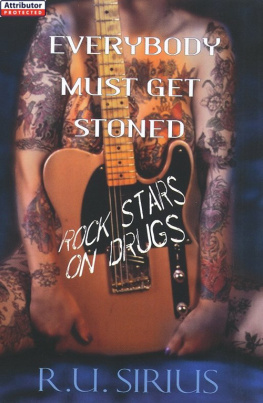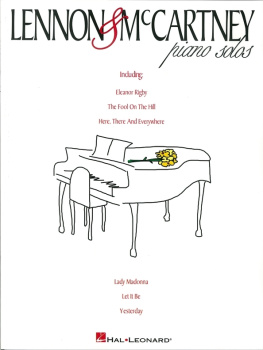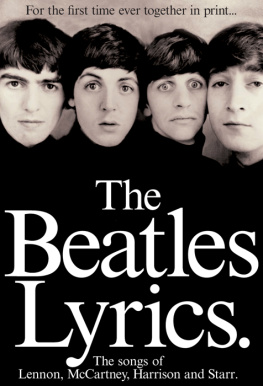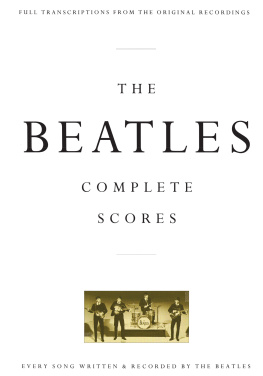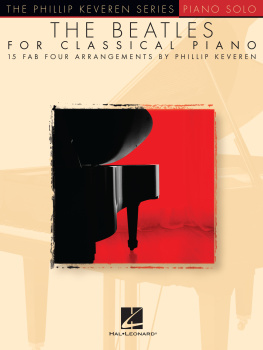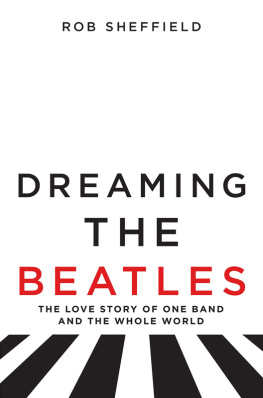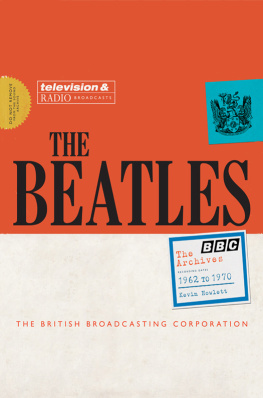C opyright 2017 Joe Goodden. All rights reserved .
This book is sold subject to the condition that it shall not, by way of trade or otherwise, be lent, resold, hired out, or otherwise circulated without the publishers prior consent in any form of binding or cover other than that in which it is published and without a similar condition including this condition being imposed on the subsequent purchaser .
The scanning, uploading and distribution of this book via the internet or via any other means without the permission of the publisher is illegal. Please purchase only authorised electronic or paperback editions. Your support of this self-funded, self-published authors rights and wishes is greatly appreciated .
First published in 2017 by Pepper & Pearl .
F or Ellie, Ted and Rosa. Always .
I remember we had dinner one night just a friendly dinner, just bein mates and I remember John saying he was thinking of having this trepanning thing done: drilling a hole in the skull. The Romans or the Greeks or somebody used to do it, so that gave it a validity in Johns mind, I think. And he said, Would you be up for that? Do you fancy doin that? We could go and get it done. I said, Why? He said, It relieves the pressure on your brain. I said, Look, you go try it, and if its great, you tell me, and maybe Ill do it. That was the kind of stuff that was floatin around then. I just feel very lucky to have said no to those things. Cause at the time, I felt bad about sayin no. I thought, Oh, here I go again, look at me, unadventurous, Im always the one, theyre gonna make such fun of me. I mean, I got such pressure when I wouldnt take acid the first time. I got a lot of pressure there .
Paul McCartney
Introduction
T he flow of drugs runs throughout the Beatles story. From the long, late nights wowing crowds in Hamburg aided by the rush of speed pills, to the LSD-fuelled creative breakthroughs that came with Revolver and Sgt Pepper, and onto harder drugs as the 1960s stumbled to a close, those illicit chemicals helped change their music, personalities, style and beliefs .
John Lennon, Paul McCartney, George Harrison and Ringo Starr may have been reluctant leaders at times, but they were in the vanguard of change in that most revolutionary of decades. The Sixties saw a new British social movement which threw out deference to the upper classes, allowing anyone with enough talent and determination the opportunity to influence culture, the media, books, music and more. Events and attitudes which had been largely inconceivable a decade earlier became commonplace, from the sexual freedom that came with the Pill to debates in parliament and the press on the dangers of drugs and the newly permissive society .
For the most part, drugs provided the Beatles with stimulation, escape, or distraction from the pressures of performing and being in the public eye. We can never know if they would have been the same group making the same music had drugs not been a part of their lives, yet it is undeniable that they used them much as they seized upon any new stimulus throughout the 1960s: taking what they could, then moving on when they ceased to deliver .
Occasionally, as with the Beatles manager Brian Epsteins chaotic final months and John Lennons addiction to heroin, the drugs threatened to overshadow the business of creating music and painting the world a more colourful place. Lennon and George Harrison and later Paul McCartney were all subjected to police raids and arrests which had repercussions for many years. Thankfully, however, with the notable exception of Epstein, the number of casualties in their circle was low. Drugs may have helped forge friendships, build and break relationships, change moods, open doors of creativity and eventually divide the Beatles, but each member left the 1960s with their critical faculties mercifully intact .
For many years they acted as what Mick Jagger memorably termed the four-headed monster: they moved as a quartet, discovering then conquering the world together with unified wit, sartorial looks and personality traits, and even in the depths of their post-split animosity would admit that their musicianship was bound by a shared vision which bordered on the telepathic. Yet they were no clones of one another. As the 1960s wore on, each Beatle pursued different interests, which emphasised their individuality despite often overlapping: Lennon gained a reputation as the dreamer and philosopher; McCartney the curious explorer; Harrison the scholar and disciple; and Starr the photographer, filmmaker and family man. These personality outlines, although crude and by no means comprehensive, were also manifest in each mans approach to drug taking variously reckless, cautious, intrepid and intrigued .
Those hoping to find within these pages eulogies to the delights of acid or weed might care to look elsewhere. This book does not seek to glamorise drugs, and nothing written here should be seen as an endorsement. Although moral judgements have generally been avoided, it is at times necessary to address the negative effects of drug taking. Lack of condemnation, however, should never be mistaken for tacit approval .
The Beatles often spoke openly about their drug use, but never wanted their fans to mindlessly mimic their actions. I dont lead my life to affect other people, John Lennon said in 1970. I do have a moral responsibility but only as much as any other individuals in society. Im not tuning my behaviour to the fact that Im famous, because I wouldnt be famous otherwise. To play that two-faced game you have to be in politics or a journalist.
It is necessary to mention that drugs have the power to ruin individuals, families and communities. Some people dabble and lose interest quickly; others develop lifelong bonds. Some drugs can be benign or beneficial; others are destructive and deadly. Reactions can vary wildly from one person to another, even for substances considered to be relatively low-risk. If you are tempted to take drugs please be well informed of the potential dangers .
At the back of this book is a section, titled Help!, which contains information for those seeking assistance and advice on drug abuse, whether for themselves or others. Be safe, be careful .
Finally, a short note about style. This book is written in British English, which has a number of differences from its US counterpart. These include realise instead of realize, colour rather than color, rumour not rumor and so on. This may be jarring to some non-UK readers, but its what the Beatles themselves would recognise (not recognize ).
Turn on your mind, relax and float downstream. The deeper you go, the higher you fly .
T he bearded, tousle-haired, self-styled King of the Beatniks cut a striking figure as he roamed the Liverpool streets looking for local musicians. This teenage poet was touring England giving readings, often backed by local jazz and rock n roll musicians a hybrid art form he termed Rocketry armed with just a typewriter and a few possessions crammed inside a duffel bag .
It was June 1960. Shortly after his arrival in the city, 19-year-old Royston Ellis called in at the Jacaranda coffee bar to see if any local musicians were available to play. The Jac was owned by Allan Williams, a Liverpool businessman and promoter who had recently booked a number of shows for a young local beat group, and considered himself to be their first manager. The band known variously as the Beetles or Silver Beetles, and occasionally the Beatles had just returned from Scotland, where they had supported singer Johnny Gentle for seven dates. It was their first spell on the road as professional touring musicians .


